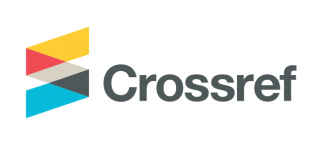ECO-PHYSIOLOGICAL STUDY OF PORITES LUTEA IN MARGINAL CORAL REEF HABITAT
DOI:
https://doi.org/10.20956/jiks.v7i2.14647Keywords:
Coral physio-ecology, Porites lutea, P/R ratio, marginal coral reefsAbstract
Marginal coral reefs are located in a limited aquatic environment, causing coral organisms to live under threat and only certain species of coral are able to survive. Porites lutea is one species of coral that is able to live in normal and marginal coral reef conditions. The purpose of this study is to determine the ecology of Porites lutea, the physiological ability of Porites lutea's Productivity (P) and Respiration (R), coral reef habitat conditions and environmental factors that affect the distribution of Porites luteal in normal and marginal locations. This study used the belt transect method, measurement of coral colony volume, physiological productivity (P) and respiration (R), transect picture for substrate cover and coral reef conditions and CTD to measure environmental indicators such as temperature, salinity, turbidity, chlorophyll and DO. The results shows that the density of Porites coral is higher at normal coral reef locations (Pak Kasim), the highest volume range is 25-100 cm3, with the largest size in the 451-475 cm3 class. P/R values is higher at normal coral reef sites, especially in reef slope areas. Coral reef habitat cover is dominated by abiotic components with poor coral reef conditions in marginal and normal environments. Water temperature was significantly different (P=0.039) between two normal and marginal locations with a range of 27.08 - 27.51 oC, Salinity was significantly different (P=0.145) with a salinity 33.44ppt at normal locations and 32.88 ppt at marginal locations. The chlorophyll and oxygen number was not significantly different between the two locations, the range of chlorophyll 0.03 – 0.15 mg/L and oxygen 2.49 – 5.23 mg/L. The turbidity factor was significantly different between locations (P=4.86E-07) where the marginal location in Sample was more turbid than the normal location in Pak Kasim. This study shows that there are differences between normal and marginal waters in environmental conditions and physiological reactions of Porites lutea, but this coral is able to survive to show their resilience to environmental stresses.
Keywords: Coral physio-ecology, Porites lutea, P/R ratio, marginal coral reefs.
Downloads
Published
Versions
- 2022-02-14 (2)
- 2022-02-20 (1)
Issue
Section
License

This work is licensed under a Creative Commons Attribution-NonCommercial 4.0 International License.

This work is licensed under a Creative Commons Attribution 4.0 International License













